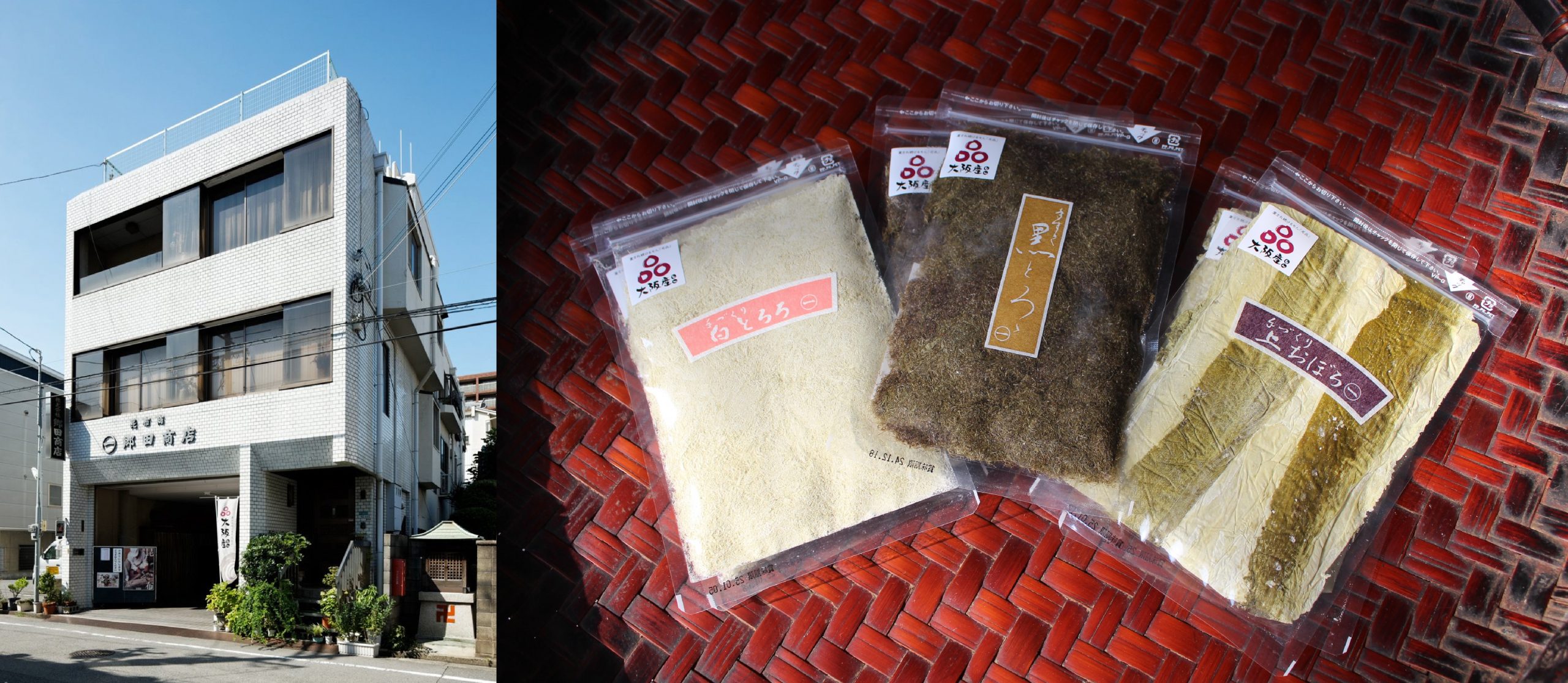
Kombu (kelp) has always been a key part of Osaka’s food scene as an essential ingredient of the dashi broth culture as well as Osaka’s favorite dishes like kobu udon (udon noodles topped with kombu) and battera sushi (pressed sushi with mackerel and kombu). In Sakai, kombu has had a great influence on its food culture ever since it reached the port of Sakai during the Edo Period (1603-1868 CE) and it is now impossible to separate kombu from Sakai, where the techniques used in shaving kombu have been perfected as they came together with the excellent knives produced in the city.
Made Possible Only with the Best Knives
When the kitamaebune shipping route opened during the Edo Period, products from Hokkaido were brought to the port of Sakai through the Sea of Japan via places like Tsuruga and Shimonoseki and large amounts of kombu began to arrive in Sakai. Known as the “Kombu Road”, this shipping route contributed greatly to the popularization of kombu. At each port between Hokkaido and Sakai, kombu merged with the local industry and culture, creating various processed kombu products specific to each region. In Sakai, thanks to its excellent knife artisanship, the production of oboro kombu and tororo kombu—which are made by shaving a block of kombu—took hold.
By processing kombu using sharp Sakai blades, kombu products that melt as soon as they hit your mouth were made possible. Between the Taisho Period (1912-1926 CE) and early Showa Period (1926-1989 CE), the number of kombu businesses grew profoundly in Sakai, and the total number is believed to have reached 150 at its peak. This is reflected in the old maps of the historic city center in which the word kombu appears regularly.
The Secret is in Sharpening
Goda Shoten is a manufacturer of kombu products in Sakai where kombu is still shaved by hand. The founder was trained as a kombu craftsperson in Osaka City and opened his own company in Sakai after the war. The company is now in its third generation and continues to make hand-shaved kombu under the direction of current president, Mitsunobu Goda, as one of the few remaining kombu manufacturers in the city.
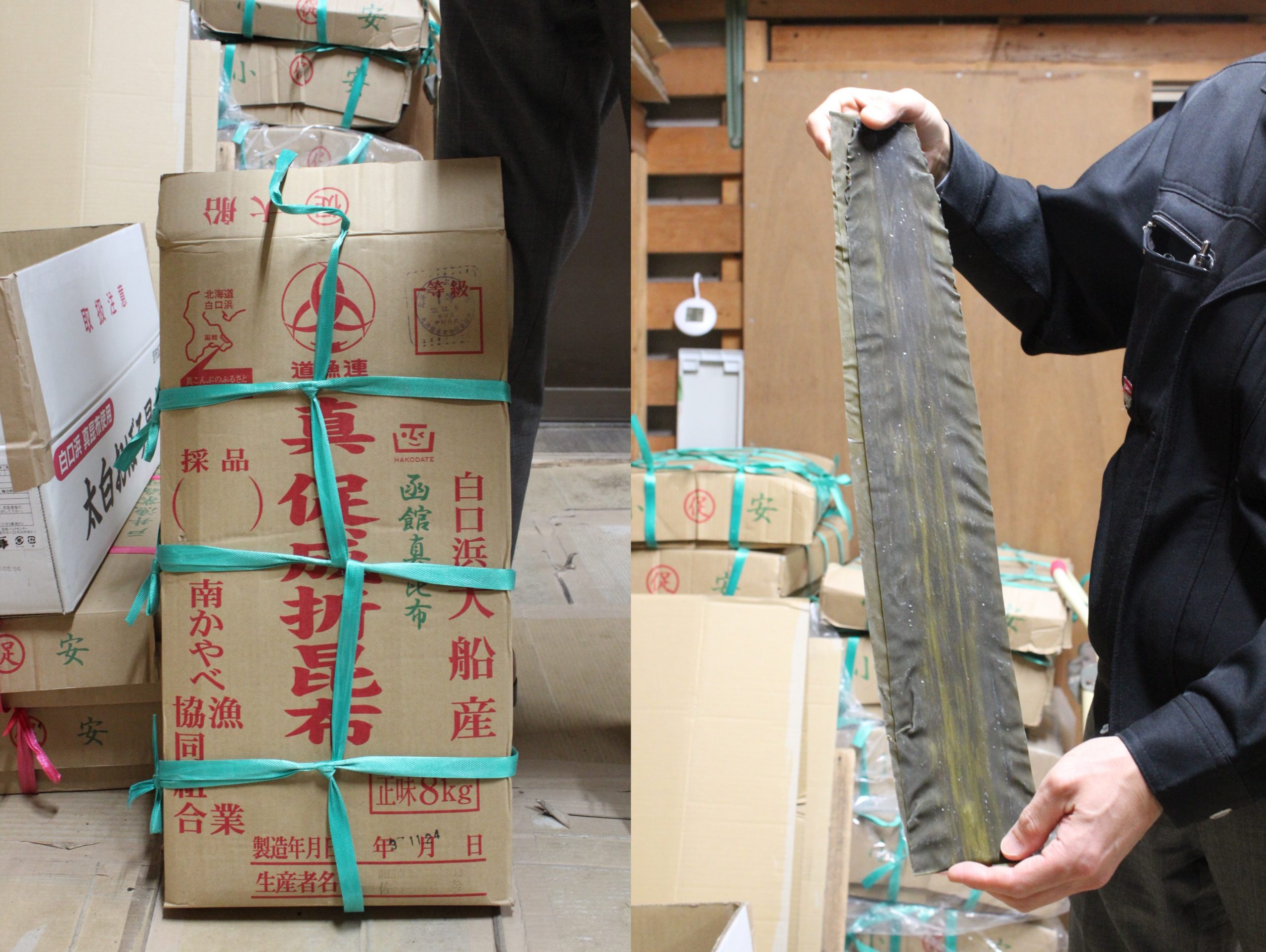
Dried kombu is ordered in tons.
The kombu used at Goda Shoten is ma-kombu—known as the highest quality kombu—produced in Shirokuchihama in Southern Hokkaido. It has a rich, deep umami.
The top-rated kombu is soaked in vinegar for 5 to 10 minutes then left overnight for the flavor to settle. Brewed vinegar is continuously added to the master container which has never been emptied since the founding. The result is a vinegar packed with the umami of all the kombu soaked here over the years, creating a rich flavor that is only possible in such conditions. Because of this special vinegar, no additional “flavoring” process is required. Although the kombu is soaked in vinegar, the end product is not strong in sourness like su-kombu (literally “vinegar kombu”). Rather, this process helps bring out the full flavor of the kombu.

After a night of absorbing vinegar (left); A special machine is used to clean the surface of kombu. (right)
The kombu is perfectly flavored and soft enough for processing after one night, and when the craftsperson takes the softened kombu into their hands, it quickly turns into paper-thin belt-like sheets. An experienced craftsperson can produce some 10 kilograms of oboro kombu in just one day.
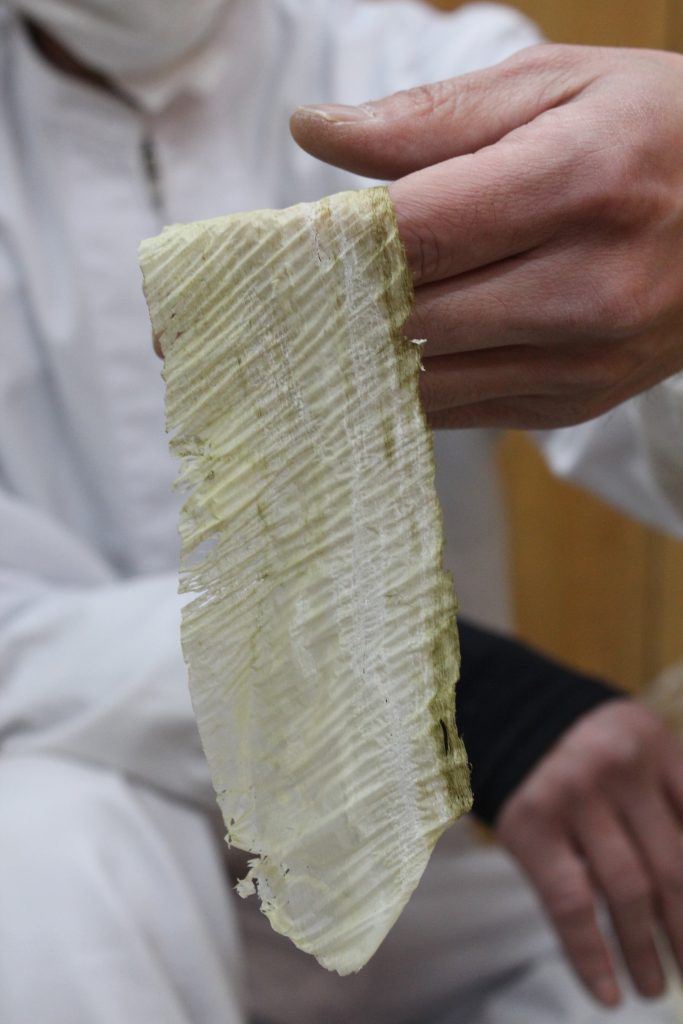
A freshly shaved oboro kombu. It’s so thin that you can see through it.
Holding the edge of kombu down with a foot, the craftsperson begins to carefully shave it with a knife, one sheet at a time. It goes without saying that the shaving technique is key to the melting texture of tesuki kombu, but the real secret lies with the knife.
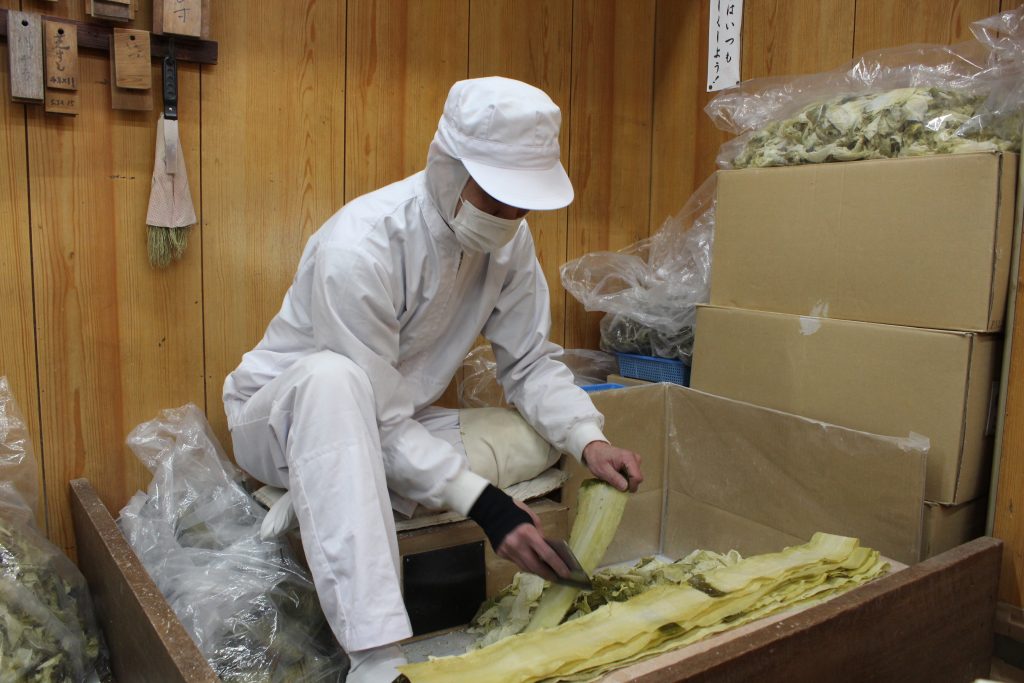
An experienced craftsperson quickly shaves the kombu, seemingly without effort.
“Shaving techniques can be acquired in a few years, but sharpening a knife that can make a clean shave is a lifelong challenge,” says a kombu maker with 16 years of experience. Knife sharpening is a critical part of the job especially as kombu craftspersons go through a number of knives in a day. The special knife they use with a curved edge is called akita knife.
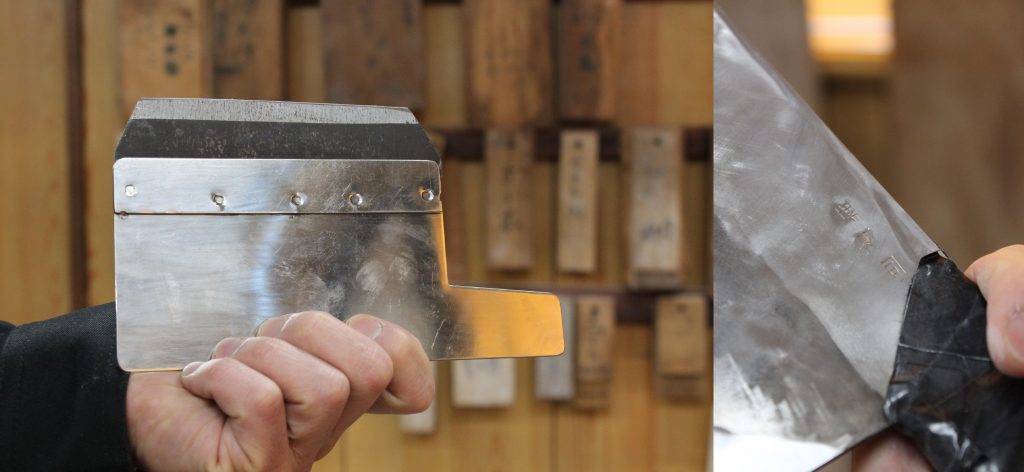
Sakai knives are extremely sharp yet have the elasticity that is gentle on the soft kombu.
Oboro Kombu vs. Tororo Kombu
Oboro kombu and tororo kombu are both made by shaving off the surface of kombu. While oboro kombu are wide belt-like strips, tororo kombu are shaved into small strands.
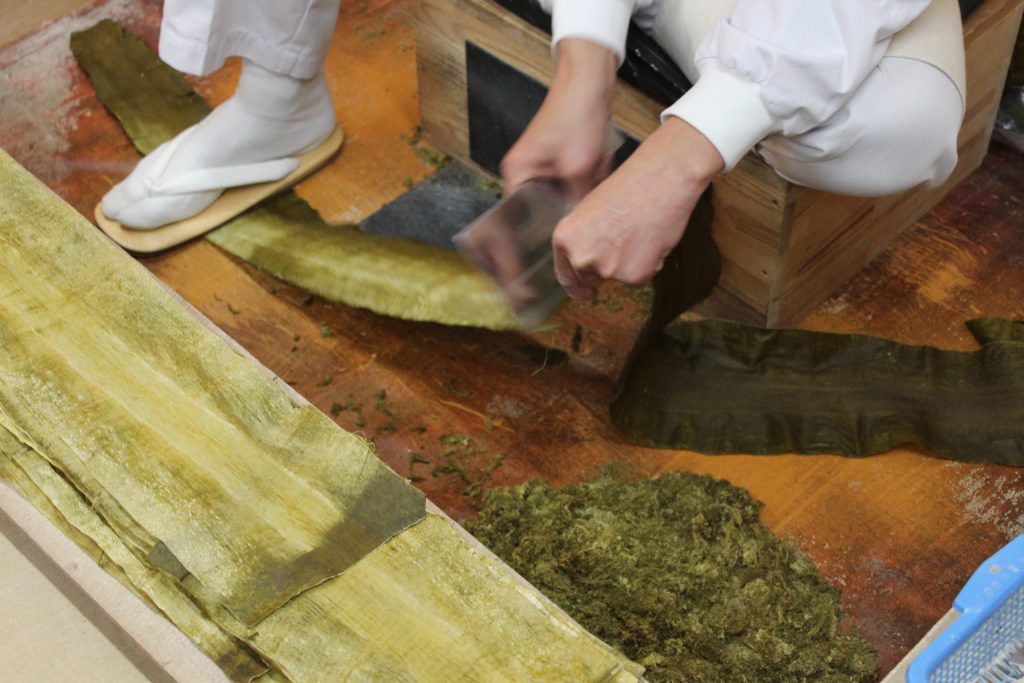
“Kuro Tororo,” shaved off of the surface
The akita knives are used for both oboro and tororo, but only the knives used to shave tororo kombu have tiny ridges at the edge.
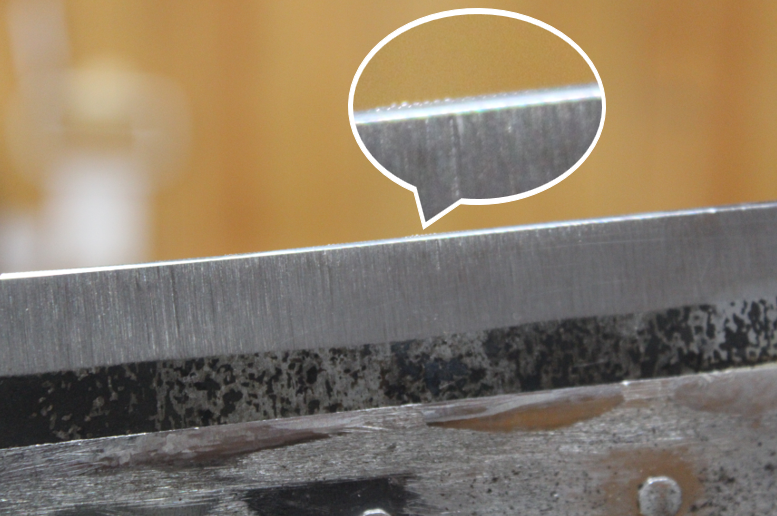
A knife used to shave tororo kombu. You can see the serration like a saw when taking a close look at the edge.
Once oboro kombu is shaved off, the remaining core center of kombu becomes shiroita kombu. The thin rectangular layers of kombu may look familiar—it is the translucent sheet of kombu you find covering the mackerel on top of battera sushi, a type of hakozushi (pressed sushi in a box). Sometimes called “Osaka Sushi,” hakozushi is one of Osaka’s specialties that was historically more popular than nigiri and often bought as a souvenir or a boxed lunch to take to theaters in Osaka.
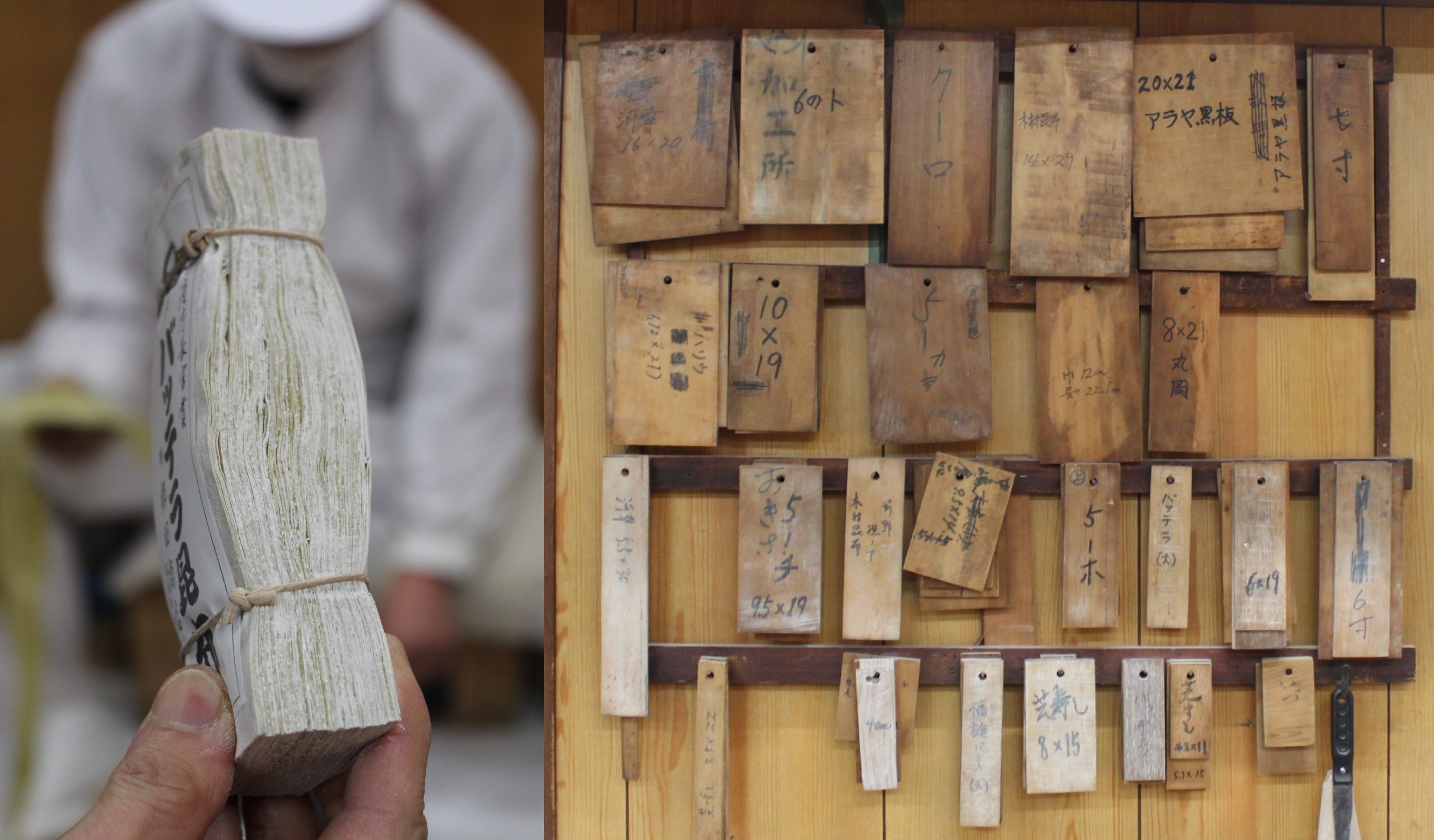
Shiroishi kombu, cut into a perfect size to make battera sushi. (left); The size of shiroishi kombu is customized to each order using the wooden blocks that represent the various sizes required for each customer. (right)
Shiroita kombu in battera sushi not only serves as a lid to prevent the mackerel from drying up but also adds to the flavor as the umami of kombu gets into the sushi and gives it a mild flavor over time. In Osaka where take-out sushi was a norm, shiroita kombu was a way to enhance the flavors and deliver ever more delicious food to fill Osakan’s bellies.
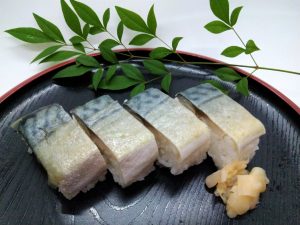
Battera sushi is the most popular mackerel sushi in Osaka. The flavor settles in during the journey home.
In addition to wholesale products, Goda Shoten offers a variety of kombu products for retail. Tours are also available. (Reservation is required.)
Goda Shoten Co., Ltd.
5-1-23 Ichinocho Higashi, Sakai-ku, Sakai-shi
https://www.godashoten.com/
